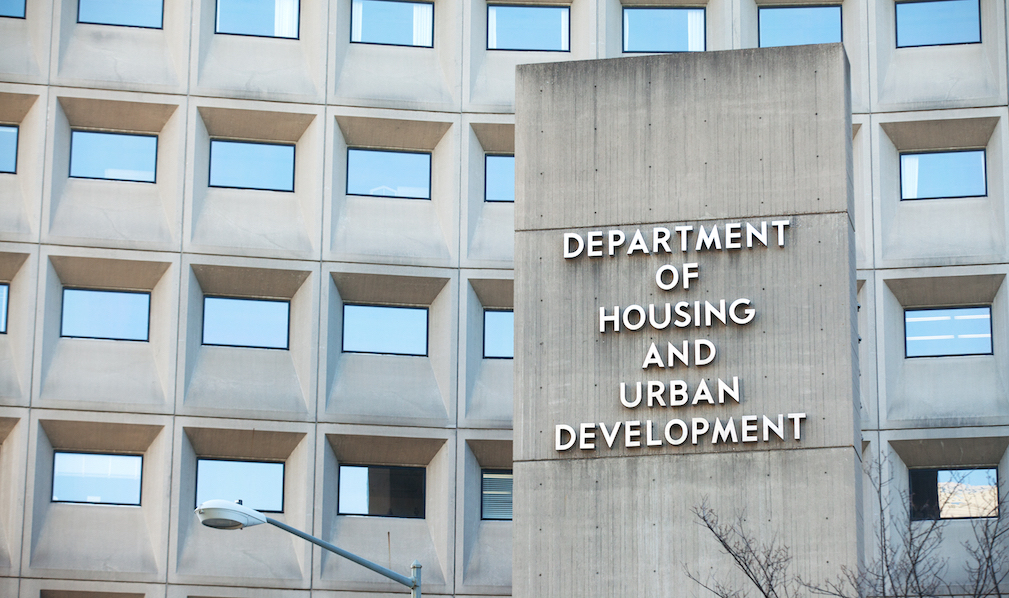Executive Conversations is a HousingWire web series that profiles powerful people in the financial industry, highlighting the operations and the people that make this sector tick. In the latest installment, we sit down with Michael Greenbaum, COO of Safeguard, to talk about steps servicers can take to meet conveyance deadlines and the expansion of FHA’s CWCOT program.
Q. What are the best strategies for meeting conveyance deadlines?
 A. Reconveyances are one of the biggest challenges mortgage servicers face. Coupled with constant changes in leadership, guidelines, HUD vendors, and the interpretations of regulations, servicers face some significant hurdles with FHA loans. While these revisions to regulatory requirements keep the servicing and property preservation industry on their toes, the resistance and/or inability to efficiently make changes within the organization tend to halt progress and affect the timely conveyance of properties to FHA.
A. Reconveyances are one of the biggest challenges mortgage servicers face. Coupled with constant changes in leadership, guidelines, HUD vendors, and the interpretations of regulations, servicers face some significant hurdles with FHA loans. While these revisions to regulatory requirements keep the servicing and property preservation industry on their toes, the resistance and/or inability to efficiently make changes within the organization tend to halt progress and affect the timely conveyance of properties to FHA.
Servicing rules within organizations can stall the conveyance of files in an effort to obtain written approval of expenses to avoid out-of-pocket costs. This is true in waiting for the insurance company to issue a check, as well as waiting for MCM approval of over allowable requests. While some files deserve prudent review and follow up for large expenses, many files can efficiently move through the process with the establishment of standard cost-benefit analysis. Safeguard has worked with several clients to establish standard cost forms that account for unpaid principle balance, cost of repairs for conveyance condition, pending insurance funds, possibility of HUD reimbursement, and expenditures-to-date. Utilization of a standard template can empower front line staff to make decisions faster and avoid bottlenecks of management reviews required within the servicing shop.
The 60-day to sale program would help mortgage servicers and their property preservation partners meet conveyances deadlines more regularly. The concept is completing a convey maintenance inspection 60 days prior to the sale of the property. This ensures that all work is completed in a timely manner, and any issues are remediated prior to sale. Bids can be approved more timely, and pre-sale hazard repairs are not held for post-sale.
Mortgage servicers might also consider giving their property preservation providers delegated authority to place properties ICC. This means allowing them to have the money up-front to get a property ICC and bid to HUD later to decrease risk. At the first post-sale order they will have authority to complete all of the work that is needed.
Q. What is one important policy that needs to be defined with the P&P vendor?
A. Removing personal property following the foreclosure sale is one area where costs can rise and conveyances can experience delays, and procedures already exist to manage this issue. A majority of states do not prohibit servicers from self-help to remove abandoned property following foreclosure sale. Despite this, the majority of servicers do not utilize the FHA allowable to remove and store these items following foreclosure sale. With the release of HUD ML 2010-18, servicers were required prior to HUD conveyance to remove all debris and personals, and place properties into broom swept condition. This was a significant change from prior conveyance requirements and sparked debate between HUD and servicers with regard to shifting liability and risk of an increase in litigation from borrowers citing missing personal property.
HUD reacted quickly with the release of a frequently asked questions (FAQ) providing servicers with a $300 allowable for reimbursement to store abandoned personals in lieu of disposal. The FAQ provided guidance to follow local laws with regard to the removal, disposal and/or storage of abandoned personals. This guidance afforded servicers the ability to pursue self-help and remove the items in effort to convey the property to HUD quicker. Despite the accommodation from HUD, the allowable and guidance is not common practice even today, seven years after the new requirement for broom swept condition.
Alternatively, servicers seek guidance from counsel as to whether or not to pursue an eviction of personal property on a case-by-case basis. This delays conveyance and leaves the property subject to new damages, complaints from neighbors, and potential code violations. The absence of a clear, consistently executed matrix regarding the removal, disposal or storage of abandoned personal property leads to unnecessary bids submitted to HUD, ambiguity in the definition of possession, and confusion surrounding the calculation of the convey due date. Establishing a personal property matrix and providing guidance to your property preservation vendor to execute is a prerequisite for timely conveyance. Likewise, a well-researched, defined policy serves as a defense if legal complaints ensue.
Q. How do you coordinate all players involved?
A. With guidance from FHA prohibiting reimbursement of property preservation and inspection costs incurred after the convey due date, the inability to adopt and revise procedures that bog down the convey process will undoubtedly cost servicers millions of dollars in non-reimbursable expenses. Partnering with your property preservation vendor and adopting best practices communicated by FHA staff and their MCM vendor is crucial in reducing or eliminating out-of-pocket expenses.
To reduce the costs of servicing FHA loans and conveying timely, policies regarding personal property removal, repairing of insurable damages, and waiting for bid approval from the MCM are in need of re-examination. Servicers need to adjust their operating policies to complement the expectations of HUD to avoid conveyance delays. Additionally, pre-foreclosure sale FHA loans have historically taken a back seat to the management of post-sale assets within servicers’ shops. Servicers could realize significant cost savings from taking another look at prioritization of pre-sale assets – specifically in the areas of personal property, insurable repairs, servicing rules and insurance claim settlements.
Q. What are the effects of the CWCOT program?
A. Servicers should re-evaluate the timeframes of when to begin management of post-foreclosure sale files. With the expansion of the (Claims Without Conveyance of Title) CWCOT program allowing servicers to bid market value at the scheduled sale, appraisals are requested well in advance of the scheduled sale and properties reviewed for inclusion in the CWCOT program. This is the time to review the file for outstanding impediments to conveyance condition and status of over allowable requests, in addition to hazard insurance recovery or repairs.
The single largest driver of denied over allowable requests from HUD is missed due diligence timeframes causing the property to be overdue for conveyance. Decisioning the property conditions and denied over allowable requests 60 days prior to scheduled foreclosure sale and providing authorization to your property preservation vendor will result in 20 or more days shaved off the timeframe to place in conveyance condition and greatly reduce out-of-pocket costs associated with missing the due date for conveyance.





